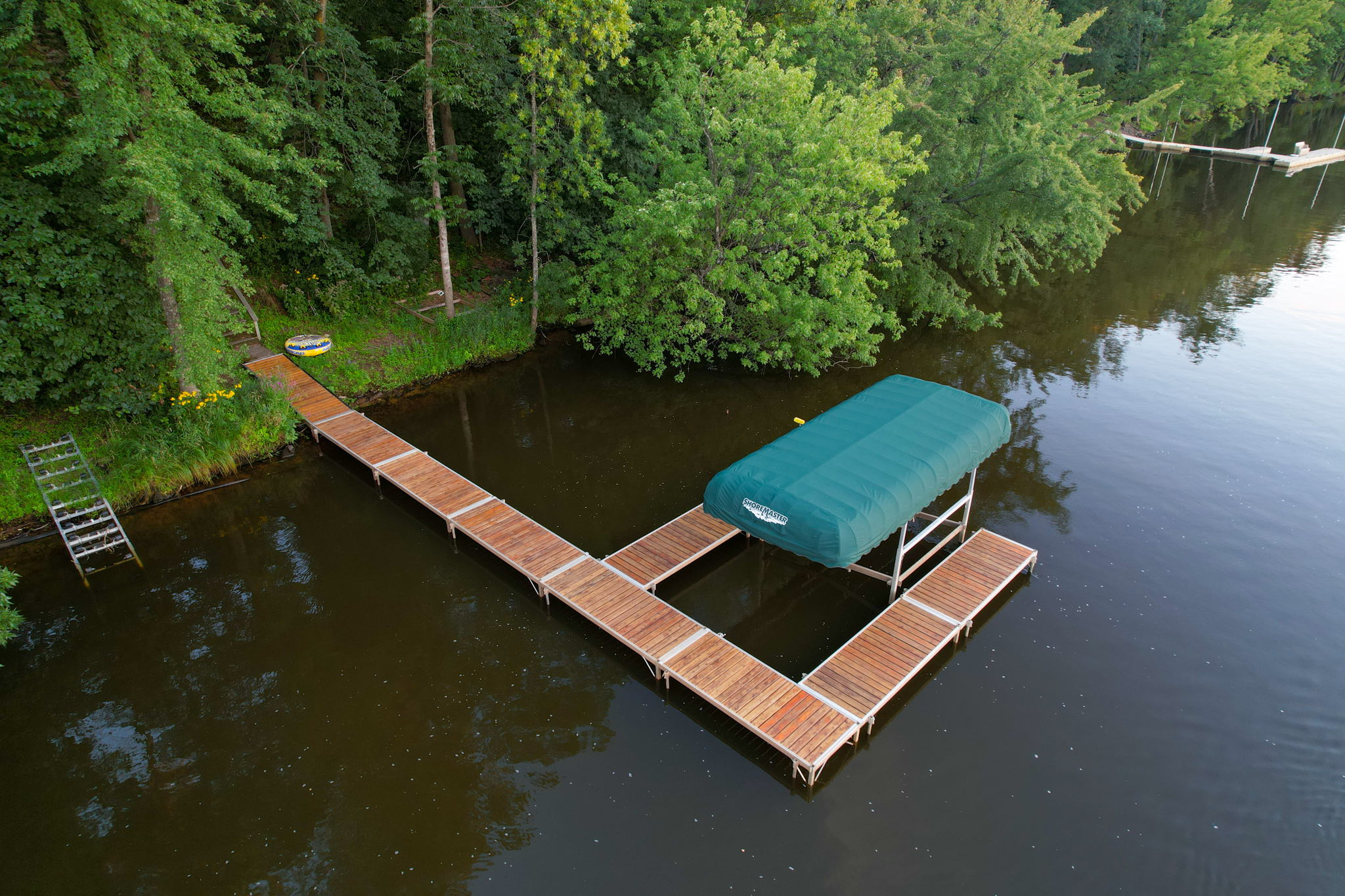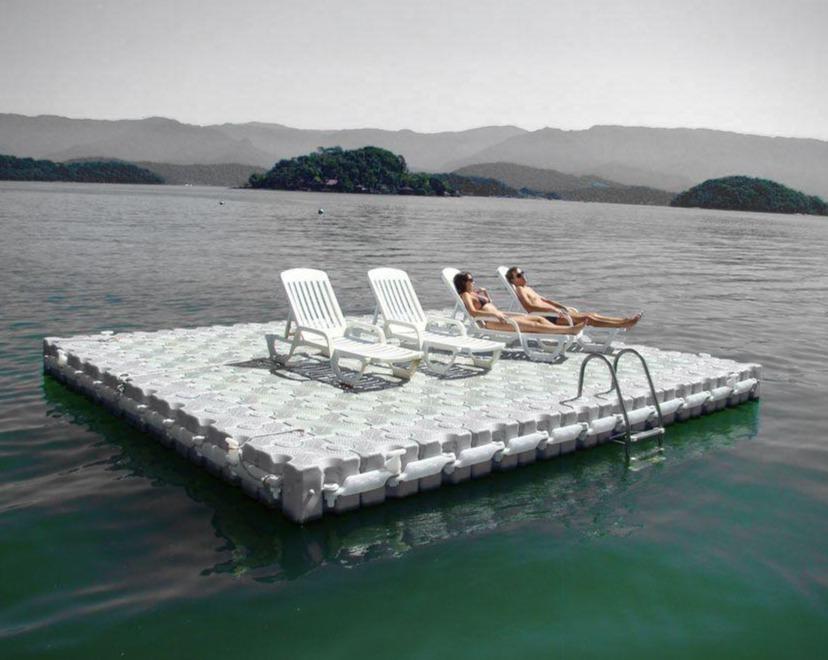Produce the Perfect Docking Service With Floating Docks
Floating docks present a versatile service for a range of maritime requirements, adapting seamlessly to rising and fall water levels and diverse vessel types. Their modular nature enables rapid setup and moving, yet the option of proper materials and design features is important for ensuring both functionality and visual charm. As we check out the vital aspects that add to the performance of floating docks, a number of vital aspects regarding security and maintenance will emerge, questioning regarding exactly how to enhance your docking experience. The subsequent conversation will certainly brighten these crucial considerations.

Advantages of Floating Docks
Floating docks offer various benefits that make them an excellent selection for numerous maritime applications. Unlike fixed docks, floating docks rise and autumn with the trend, making certain constant availability for vessels.
Additionally, floating docks are typically much easier and quicker to set up compared to traditional set structures. Their modular design permits straightforward setting up and disassembly, assisting in maintenance and relocation when necessary. This flexibility is especially advantageous for temporary applications or in atmospheres where problems may alter.
Floating docks additionally tend to be much more environmentally pleasant, as they minimize interruption to the seabed and surrounding marine ecosystems. Their resilient nature lowers the threat of damages to aquatic life, promoting a healthier atmosphere. These docks can be customized to suit different vessel dimensions, making certain that they fulfill details functional requirements.
Ultimately, the combination of flexibility, simplicity of installation, and ecological factors to consider makes floating docks a very effective service for a wide range of maritime requirements.
Selecting the Right Materials
Choosing the proper products for floating docks is crucial to ensure stability, long life, and sturdiness. The option of materials straight impacts the dock's performance in numerous ecological conditions, including exposure to water, sunshine, and prospective wear from aquatic web traffic.
Usual materials used for floating docks include light weight aluminum, timber, and high-density polyethylene (HDPE) Light weight aluminum is lightweight, corrosion-resistant, and calls for marginal upkeep, making it an exceptional selection for long life. Nonetheless, its first cost can be greater contrasted to other materials.
Wood, while cosmetically enticing and supplying a standard look, can be vulnerable to rot and insect damages otherwise effectively dealt with. Therefore, using pressure-treated wood or normally durable species like cedar or redwood can mitigate these issues.
HDPE is a prominent option as a result of its resistance to UV rays and chemicals, along with being eco-friendly. floating docks. It is lightweight and offered in various colors, enabling for personalization
Eventually, the best material choice will rely on particular requirements, including spending plan, preferred appearances, and environmental considerations. Careful analysis of these elements will result in a resistant and effective floating dock service.
Style Considerations for Security
When designing floating docks, ensuring stability is a basic facet that can significantly affect their functionality and safety. Stability in floating dock layout is affected by various aspects, consisting of buoyancy, weight distribution, and the plan of components. An ideal buoyancy system need to use products that offer adequate lift while lessening weight. This balance guarantees that the dock continues to be above water, also under varying lots.
Weight distribution is vital; evenly distributing tons across the dock protects against tilting and enhances stability. This can be achieved via critical positioning of click here for more docking tools, such as fenders and visit our website cleats, in addition to proper spacing of floats. Furthermore, the dimensions of the dock need to be thoughtfully prepared. Broader layouts can supply enhanced stability, especially in rough water conditions, while longer docks might need extra assistances to avoid drooping.
One more key consideration is the environmental influence, consisting of wave activity and wind. Incorporating attributes such as sidewalls or skirting can assist reduce the impacts of environmental pressures, maintaining stability in unfavorable conditions. Inevitably, a mix of thoughtful layout, material choice, and understanding of environmental aspects will certainly generate a drifting dock that fulfills both security and safety requirements.
Installment Tips and Techniques

Following, secure the essential licenses and stick to neighborhood guidelines, which might dictate installation approaches and environmental factors to consider. If needed, engage a certified service provider experienced in floating dock setups. Use top quality products made for marine settings to enhance toughness and durability.
When placing the dock, align it identical to the shoreline to assist in easy access. Guarantee that the anchoring system is durable, using cinder block or helical anchors to support the dock against wind and wave action. It's crucial to represent seasonal water level fluctuations, consisting of possible ice activity in chillier environments.
During the setup, confirm the dock's floatation and security prior to finalizing the anchoring. Consistently evaluate the installment for any kind of signs of wear or damages. By complying with these strategies and ideas, you can attain a safe, practical, and cosmetically pleasing floating dock setup that fulfills your needs.
Maintenance and Care Standards
Caring and basics keeping for floating docks is important to lengthening their life expectancy and making sure secure usage. Regular inspections need to be performed to recognize any kind of indications of wear, damage, or aquatic growth. Look for cracks, loose fittings, or stained areas on the dock's surface, as these issues can endanger structural integrity.
Cleaning is essential. Use a stress washing machine to eliminate algae, barnacles, and particles, which can build up over time. For persistent growth, consider ecologically friendly cleaner that will not harm aquatic life.
Additionally, check the mooring lines and anchors often to guarantee they are safe and secure and cost-free from corrosion. Replace any type of frayed or damaged lines immediately to maintain security.
Throughout extreme weather condition, such as storms or freezing problems, take preventive procedures. Protect the dock with added mooring lines and, if feasible, get rid of any detachable parts to stop damage.
Final Thought
In conclusion, the application of floating docks provides a flexible and effective docking service suitable for numerous maritime applications. With appropriate installment and regular maintenance, floating docks can offer effective and dependable docking experiences for a broad range of vessels.
As we check out the important aspects that add to the effectiveness of floating docks, several key factors regarding stability and upkeep will certainly arise, increasing questions concerning how to maximize your docking experience. Unlike taken care of docks, floating docks increase and loss with the tide, ensuring consistent availability for vessels.When creating floating docks, making sure security is a basic facet that can considerably influence their capability and safety and security. Stability in floating dock style is affected by numerous aspects, consisting of buoyancy, weight distribution, and the plan of elements. Ultimately, a combination of thoughtful layout, material selection, and understanding of environmental variables will certainly yield a drifting dock that meets both security and safety and security requirements.